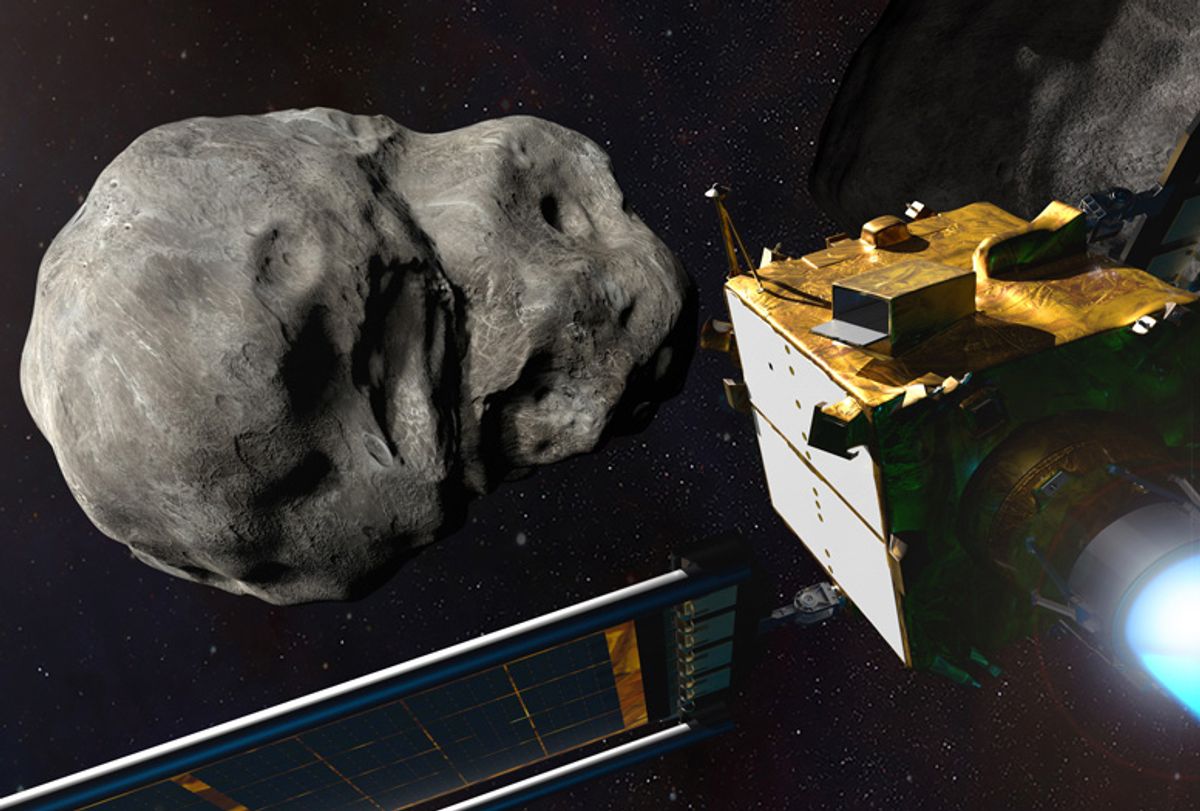After NASA and the Johns Hopkins Applied Physics Laboratory deliberately crashed a space probe into an asteroid two weeks ago, astronomers anxiously monitored the distant space rock to see if the mission was a triumph or a failure to launch. This afternoon, NASA announced the suicide mission was a huge success, making great strides for the future of planetary defense missions.
The Double Asteroid Redirection Test (DART), which was launched late last year, was designed to test our ability to deflect an asteroid from hitting Earth. Such an impact could wipe out most life on Earth, just like the giant space rock that killed off the non-avian dinosaurs 65 million years ago. Fortunately, asteroids, even large ones, are not particularly difficult to deflect, particularly if you get to them early: a tiny change in velocity years in advance can turn an extinction-event-causing asteroid into one that misses Earth entirely.
Such tiny changes in trajectory can be achieved by nudging said bodies with other objects at high speeds — akin to how a billiards ball collision can shift the trajectory of balls already in motion. Indeed, while DART's engineering was novel, the science was not, and involves well-established Newtonian physical principles related to kinetics and momentum that are hundreds of years old.
The 1,320-pound (600 kilogram) DART spacecraft was sent to intercept Dimorphos, a small asteroid that is technically a moonlet (meaning a tiny moon) of 65803 Didymos, a much larger asteroid half a mile wide. The two rocks are about 6.8 million miles from Earth. Dimorphos is about the height of the Washington Monument, with a diameter of 160 meters (530 feet). DART crashed into the moonlet at 14,000 mph, or just under four miles per second.
DART livestreamed its own demise, dispatching closer and closer images of the surface of Dimorphos as it crashed. Then, the feed went dark. It took much longer to see the collision from another angle. But once more images came in, the results were astonishing.
A global constellation of telescopes called the Asteroid Terrestrial-impact Last Alert System Project caught a glimpse of the impact. Dimorphos, appearing like a little white snowball against a backdrop of stars, suddenly puffs with dust. The resulting plume of rocks and dirt was later measured by the Southern Astrophysical Research Telescope in Chile, pegging it at about 6,200 miles (10,000 kilometers) long.
These were some impressive pictures of debris, but they didn't necessarily verify that the impact was a success: to do that, the mission team needed evidence that Dimorphos' orbit had actually been altered as a result of the impact. Today, NASA confirmed that the impact altered Dimorphos' orbit around Didymos by about 32 minutes. It normally took the asteroid 11 hours and 55 minutes to spin around its parent; now, it's just 11 hours and 23 minutes. That means that the impact significantly changed the moonlet's orbital velocity.
"The recoil from this blast of debris substantially enhanced DART's push against Dimorphos — a little like a jet of air streaming out of a balloon sends the balloon in the opposite direction."
"This mission shows that NASA is trying to be ready for whatever the universe throws at us," NASA Administrator Bill Nelson said in a statement. "NASA has proven we are serious as a defender of the planet. This is a watershed moment for planetary defense and all of humanity, demonstrating commitment from NASA's exceptional team and partners from around the world."
The margin for success was relatively small compared to the result. If the impact had only shifted the orbit by 73 seconds, it would have been enough. But according to NASA, "DART surpassed this minimum benchmark by more than 25 times," adding that "the recoil from this blast of debris substantially enhanced DART's push against Dimorphos — a little like a jet of air streaming out of a balloon sends the balloon in the opposite direction."
"This result is one important step toward understanding the full effect of DART's impact with its target asteroid," Lori Glaze, director of NASA's Planetary Science Division, said in the same statement. "As new data come in each day, astronomers will be able to better assess whether, and how, a mission like DART could be used in the future to help protect Earth from a collision with an asteroid if we ever discover one headed our way."
Want more health and science stories in your inbox? Subscribe to Salon's weekly newsletter The Vulgar Scientist.
Astronomers still have a lot more data to collect. Meanwhile, the European Space Agency's Hera Project will fly by the two asteroids in about four years to more precisely measure both Dimorphos and Didymos, with particular attention on the crater DART left behind.
Don't worry — this mission didn't somehow send Dimorphos in our direction. The asteroids never posed a threat to Earth and we still have little to fear from this interstellar experiment.
However, another asteroid or comet could come careening toward us, spelling doom for the planet. In fact, it is not a matter of if, but when, as such collisions are inevitable in the long run and have happened repeatedly throughout Earth's history. If an Earth-bound asteroid were detected, it could take several years for NASA or another space agency to formulate an effective defense plan. (Notably, pummeling such an asteroid with nukes would likely backfire, despite what audiences may have learned from 'Armageddon.')
But assuming humans are given sufficient warning, the DART mission has made the possibility of planetary defense much more feasible. Projects like DART may come with a hefty price tag — around $324.5 million, around the same cost as a USDA grant for farmers or a new high school learning center in Massachusetts — but that seems like a small cost for safeguarding life on Earth.
"All of us have a responsibility to protect our home planet. After all, it's the only one we have," Nelson said.



Shares